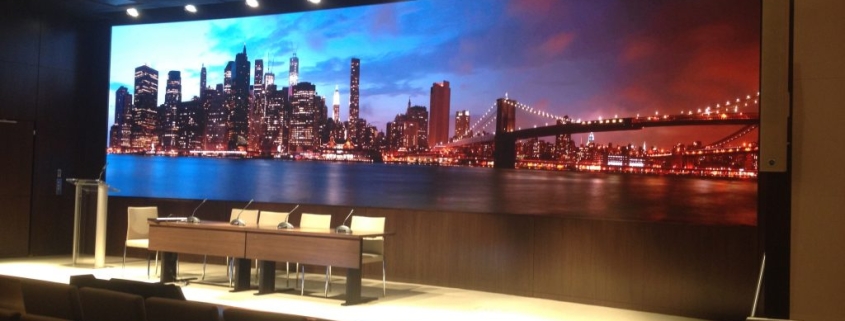Key Takeaways
- Understanding LED Wall Basics: Explanation of LED technology and components.
- Choosing the Right LED Panels: Key factors to consider when selecting LED panels.
- Planning and Design: Importance of proper space analysis, measurements, and layout planning.
- Power and Connectivity Requirements: Detailed instructions on power supply and cabling.
- Mounting and Installing LED Panels: Step-by-step guide on setting up the wall structure and attaching the panels.
- Calibration and Testing: Tips for adjusting brightness, color, and synchronization.
- Maintenance and Troubleshooting: Best practices for ongoing maintenance and solving common issues.
LED walls have become increasingly popular due to their versatility, vibrant display, and ability to create stunning visual experiences for events, advertising, and digital signage. Whether you’re setting up an LED wall for a corporate event, a concert, or a retail installation, proper setup is key to ensuring that your LED wall functions efficiently and delivers high-quality visuals.
This article will guide you through the process of setting up an LED wall, from planning to execution, ensuring you achieve the best results while avoiding common pitfalls.
Planning & Requirements
Before jumping into the actual installation, there are several factors to consider to ensure you select the right components and set up the LED wall effectively.
1. Determine Your Purpose and Use Case
LED walls come in various shapes, sizes, and resolutions, so it’s essential to determine the purpose of your LED wall:
- Indoor vs. Outdoor: Indoor LED walls typically have lower brightness levels, while outdoor walls need to combat sunlight and weather conditions.
- Event Size: If you are setting up for a small corporate meeting, you might not need as high a resolution as you would for a concert or stadium.
- Resolution Requirements: Higher resolution is required for viewers who will be closer to the screen, while lower resolution is suitable for distant viewers.
2. Space and Dimensions
Measure the area where you plan to install the LED wall. Knowing the available space is crucial for choosing the appropriate panel size and quantity. LED walls are made up of modular panels, allowing you to scale them according to the available area and resolution needs.
3. Power and Connectivity
LED walls can be power-hungry, so it’s essential to plan your power distribution:
- Power Load: Check the total power requirements of the wall and ensure you have the necessary power outlets.
- Cable Management: Plan how you will manage the cables for a clean setup, ensuring you have adequate space for routing power and data cables.
4. Brightness and Viewing Distance
The brightness of your LED wall is determined by the nit value, which measures the brightness intensity. For outdoor setups, choose an LED wall with higher nit levels to ensure visibility in sunlight. Additionally, calculate the viewing distance to ensure that the wall’s resolution matches the audience’s proximity to the display.
Step-by-Step Setup
With your planning complete, it’s time to move forward with the actual assembly and installation of your LED wall.
Step 1: Assemble the Support Structure
Start by setting up the mounting frame or support structure. LED panels are typically attached to metal frames, which can be mounted on walls or free-standing trusses. Ensure the frame is:
- Sturdy enough to support the weight of the panels.
- Properly aligned to avoid misaligned LED modules.
Step 2: Install LED Panels
Begin attaching the LED panels to the support frame. Follow these steps for optimal installation:
- Top to Bottom: Start at the top of the frame and work your way down.
- Connect Modules: Ensure each panel module connects properly to the adjacent modules to avoid gaps or misalignments in the display.
- Secure Connections: Double-check that all screws and fasteners are tight to avoid any safety hazards.
Step 3: Connect Power Cables
Each panel requires a power source. Depending on the panel size and wattage, you may need to connect multiple panels to a single power source. Be sure to:
- Use the correct power cables and connectors.
- Manage cables properly to avoid tangling or unnecessary strain on the connections.
Step 4: Data Connectivity
LED walls use controllers or processors to receive and display visual data. The main steps for data connectivity are:
- Connect Data Cables: Run data cables between the LED panels and the LED controller.
- Controller Configuration: Connect the LED controller to the media player, which will supply the content to the screen.
- Check Compatibility: Ensure that the media player and LED processor are compatible to avoid latency or resolution issues.
Configuration & Testing
Once the hardware is set up, it’s time to configure and test the system.
Step 1: Configure the LED Controller
LED controllers manage the visual output of the wall. Follow these steps:
- Load the Configuration File: Most LED controllers come with a software configuration tool. Load your configuration file, which contains information about the panel layout and resolution.
- Resolution Settings: Set the correct resolution for your LED wall. It should match the aspect ratio and pixel pitch of the panels.
- Refresh Rate: Ensure that the refresh rate is set high enough to provide smooth playback, especially for video content.
Step 2: Test for Uniformity and Brightness
Once configured, test your LED wall for the following:
- Brightness Levels: Ensure brightness levels are consistent across all panels.
- Color Calibration: Check for any color discrepancies between panels. Some panels may need additional calibration to match the rest of the display.
- Pixel Testing: Look for dead pixels or irregularities that may impact the display’s quality.
Step 3: Run a Full-Scale Test
Before going live, run a full-scale test with the content you plan to display. Check for:
- Latency Issues: Ensure there is no delay between the media player and the screen.
- Seamless Transitions: Confirm that content transitions smoothly without any flickering or glitches.
- Audio-Video Syncing: If using audio, make sure it syncs perfectly with the visual display.
Maintenance Tips
To ensure longevity and consistent performance, proper maintenance of your LED wall is crucial.
- Regular Cleaning: Dust and debris can accumulate on LED panels, reducing brightness. Use a microfiber cloth or compressed air for cleaning.
- Monitor Heat Levels: Excess heat can cause damage to LED components. Ensure the environment is well-ventilated, and check the panels for overheating regularly.
- Check Power Connections: Over time, power cables may loosen or degrade. Periodically inspect connections to prevent electrical issues.
Conclusion
Setting up an LED wall can seem daunting at first, but with proper planning and attention to detail, you can create a seamless, high-quality visual display. From choosing the right components and assembling the panels to testing and maintaining the system, every step plays a vital role in achieving optimal performance. By following this guide, you’ll ensure that your LED wall setup is professional, safe, and effective, providing a captivating viewing experience for your audience.


Leave a Reply
Want to join the discussion?Feel free to contribute!